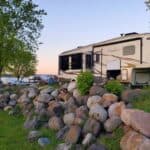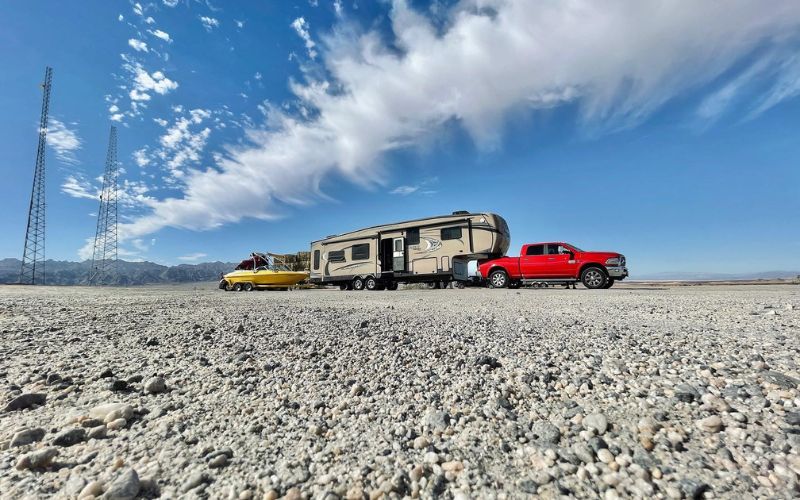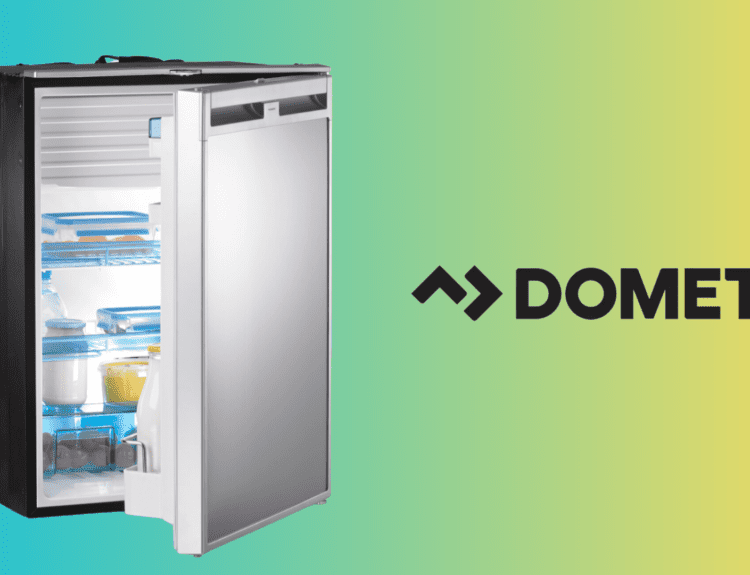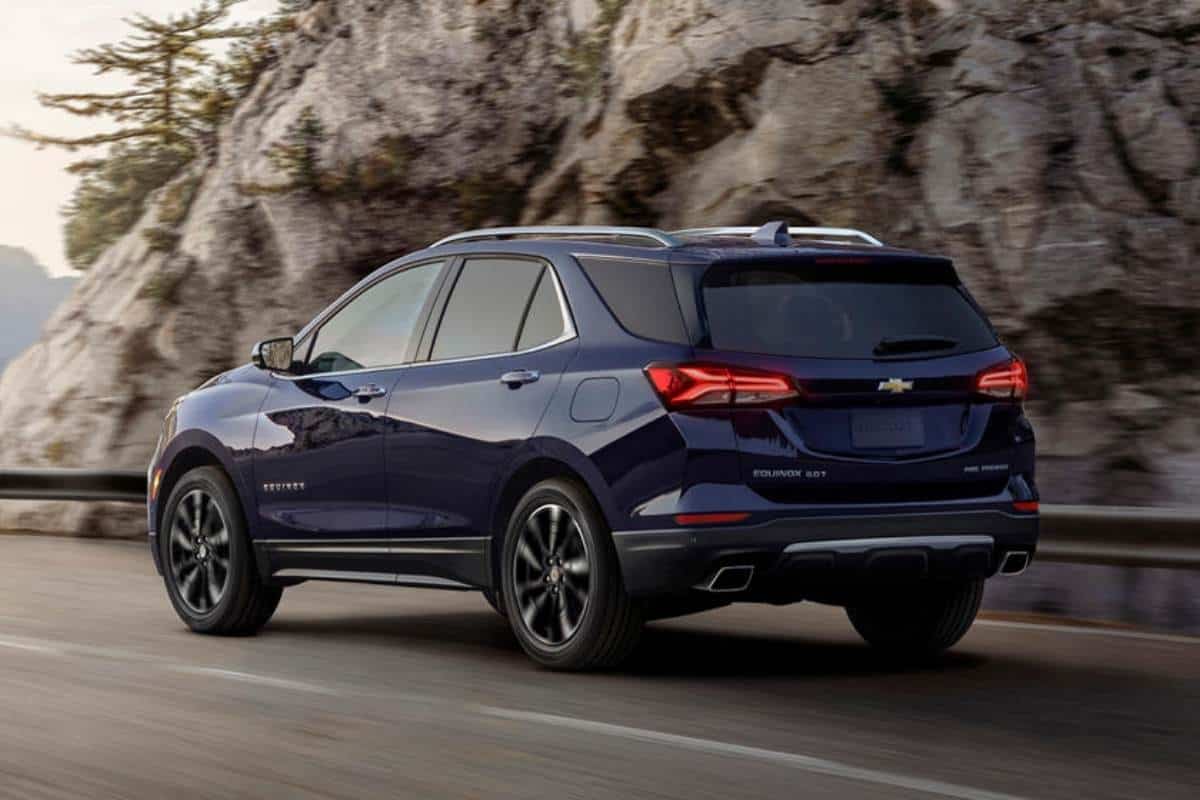When boondocking or staying at an RV campground without full water and sewer hookups, the volume of water you go through per person for a single shower can become a major issue.
Not only does showering have the potential to drain a lot of fresh water, but while also fills your gray water tank!
You’re probably wondering just how much water does an RV shower use?
On average, an RV shower will go through roughly two to six gallons of fresh water per person. This is usually enough to rinse the day off your skin while shampooing your hair. This is just a proverbial drop in the bucket compared to the 15-gallon average for what most people would consider a “Long Shower” at home.
If we’re going to make the most out of your freshwater supplies without filling your gray water storage tank on the first day of a boondocking camping trip, we’ll have to look at the deeper details of RV showers.
This will include ways to stretch your fresh water supplies and methods for showering efficiently.
Full Hookups Lead To Long Showers
When you’re connected to full hookups, the water coming in from the RV campground feeds directly into your RV plumbing system.
Then your gray water tank drains out into their general septic tank or municipal sewer system connection. In a scenario like this, water usage isn’t as much of a factor as the volume of hot water you have available.
Unfortunately, most RV water heaters only have a maximum tank capacity of 6 gallons. Still, there are 10-gallon tank models out there. That’s why many newer RVs can have a tankless water heater installed.
How Long Can You Shower in an RV?
Most RVs have a 6-gallon water heater, providing you with roughly 8 to 10 minutes of hot water if you run the shower head continuously.
If your RV has a 10-gallon water heater, you might be able to get as much as 15 total minutes of hot water.
Though you’ll notice a decline in overall temperature once the tank gets to blow the halfway mark. So, it’s not ideal for two people to shower back-to-back without giving the water heater 15 to 20 minutes of rebound time.
If you empty the water heaters storage tank, you can expect it to take 35 to 45 minutes for a 6-gallon propane water heater to be fully ready again. This might extend out to an hour or more for a 10-gallon water heater.
Tips For Conserving Water Use In An RV Shower
Water conservation must be a top priority throughout your camping trip if you are forced to live off your fresh water and gray water storage tanks.
Especially when it comes to taking a shower in your RV. Fortunately, you can do a few things to minimize water use and maximize the amount of storage capacity available in your gray water storage tanks.
Install a Low-Flow Shower Head
Low-flow shower heads are easy to find and inexpensive to install in an RV. A lot of the best models only use 1.8 gallons per minute. Some also have a “Pause” feature installed in them.
This lets you strategically shower while maintaining the same comfortable temperature if you need to turn the water stream off for a few minutes.
Use The Campground Showers
Using their facilities makes sense if you’re staying at a campground that doesn’t have full water and sewer hookups but has some type of shower house.
Though a lot of the shower facilities in primitive campgrounds are rough. So wearing shower shoes or sandals must be prepared for questionable water temperature and pressure.
Set Up A Solar Shower
Also known by some as a “Scottish Shower,” a solar shower is essentially a large heavy-duty black bag that you hang from a tree early in the morning. The water inside it is gradually heated by the sun throughout the day.
At night you can pour a small pot of boiling water into it to bring the water up to temp or enjoy a lukewarm shower. Most have a 5-to-7-gallon capacity which will let one to two people bathe at the end of a day without tapping into your RV’s internal water resources.
Setting Up An RV Shower Strategy To Conserve Water
Let’s say that you don’t have any exterior options, and you can only bathe on the water you have onboard your RV. For argument’s sake, let’s also say that you only have a 6-gallon water heater.
In a scenario like this, you may want to implement the following RV shower strategy for everyone in your family.
Set Up A Shower Schedule
Setting up a shower schedule where everyone gets at least one shower every two or three days won’t just go a long way toward extending your water supplies.
It also helps promote family harmony by ensuring fairness and giving everyone the best opportunity to get a reasonably long, hot shower.
You might also want to consider splitting up the shower schedule so that one or two people shower in the morning and one or two showers in the evening. This gives the water heater time to warm the tank’s water fully.
It also makes it easier for you to time other water usages, like washing the dishes, during the middle of the day, without robbing someone of their hot shower in the evening.
Get A Low Flow Shower Head With A Pause Feature
A pause feature on a low-flow shower head lets you shut off the water flow or reduce it to little more than a slow trickle. This lets someone get themselves wet and start shampooing their hair, with the pause engaged.
Then they can turn the water flow back on at the same temperature to rinse off again without the shock of turning the temperature knob wildly every few minutes.
Use 2-in-1 Shampoo & Conditioner
Rinsing out shampoo and conditioner tends to waste the most water. You only have to rinse once when you use a two-in-one that has both specially formulated together.
Another alternative to this is to get a leave-in conditioner. This is a small amount of conditioner that you can massage into your hair right at the end of your shower. It leaves your hair silky soft but doesn’t require a wasteful second rinse.
How To Shower In An RV Without Wasting Water
The best way to conserve water in an RV shower starts with installing a low-flow shower head with a pause feature.
Then you can use the following steps to minimize the amount of hot fresh water it takes to get clean while also reducing the volume of water that drains down into your gray water storage tank.
Conclusion
RV showers are generally shorter and only use about 2 to 6 gallons per person per shower. You can extend your fresh water supplies by showering strategically. This starts with installing a low-flow showerhead with a pause feature.
You can then use small bursts of water that are the same comfortable temperature to rinse off your body and wash your hair.
When you combine this with a thoughtful shower schedule, where each member of the family bathes at least once every two to three days will further extend your water reserves.
Upgrading to a tankless water heater will also let you have hot water on demand, which will come in handy when staying at a campground with full water and sewer hookups.


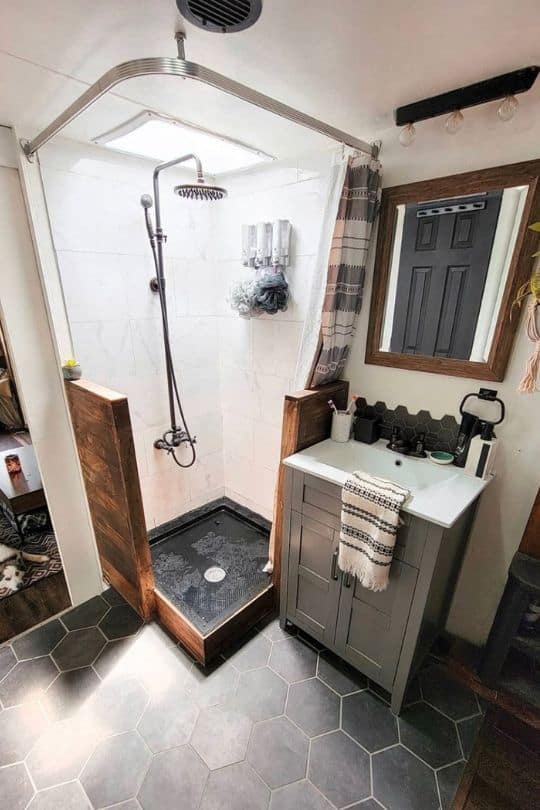
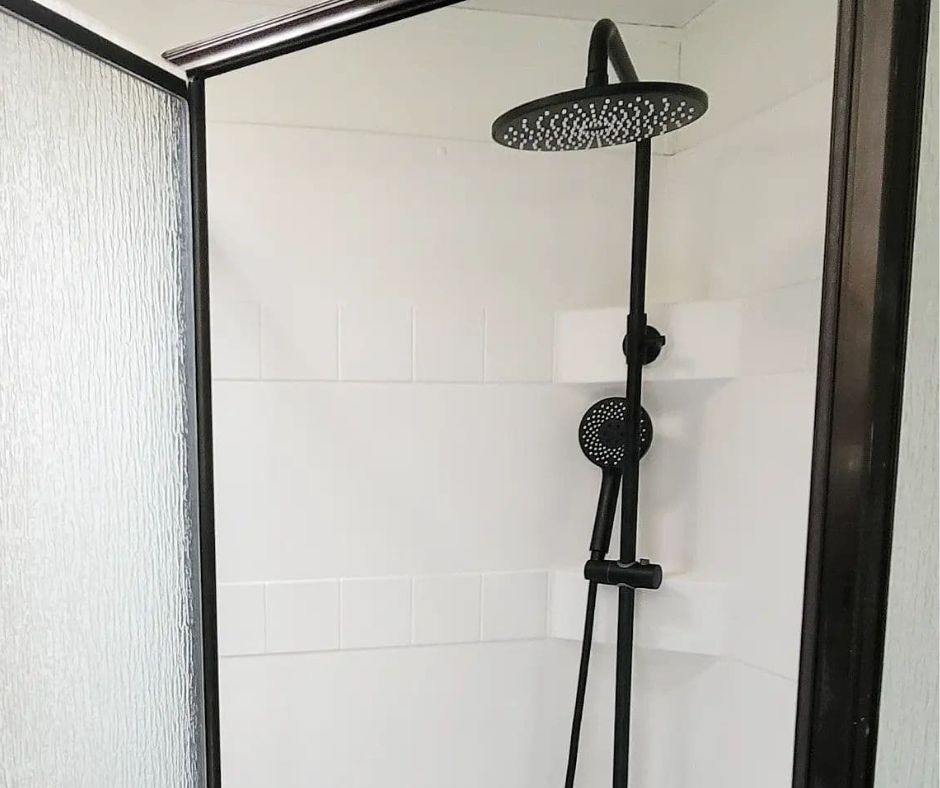
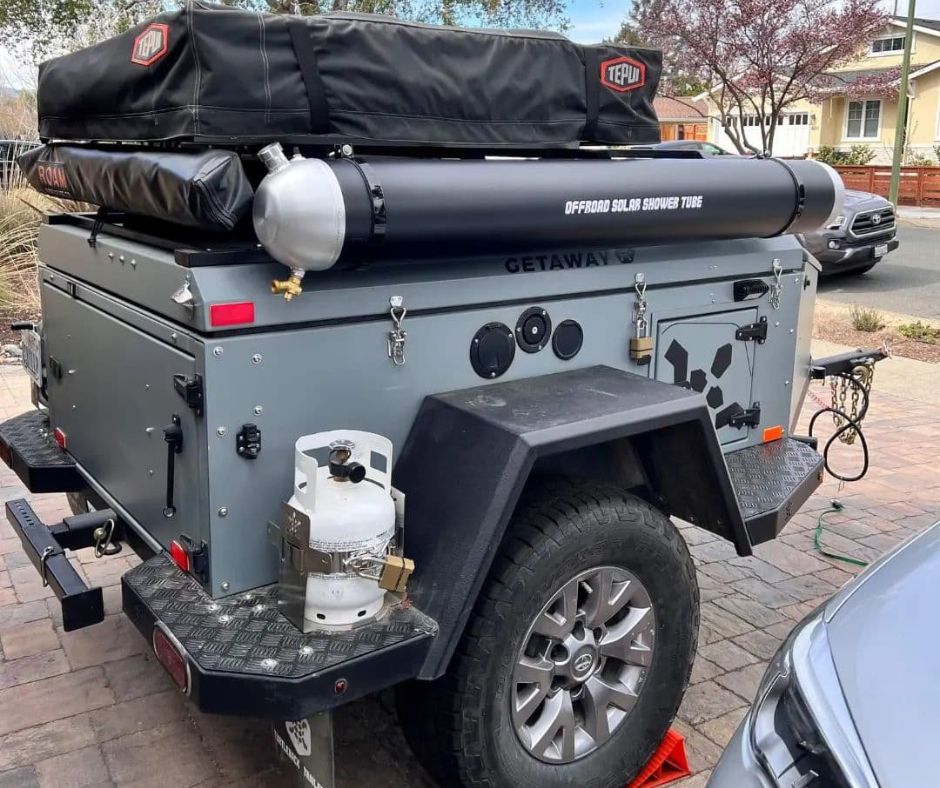
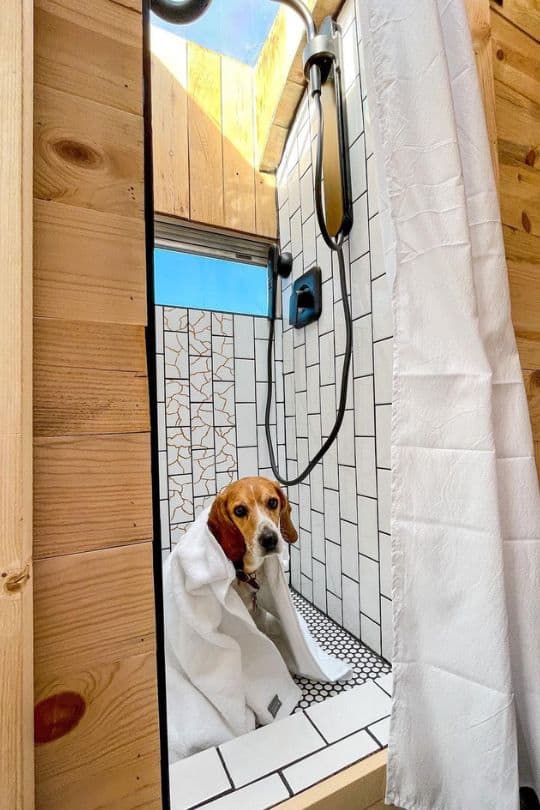
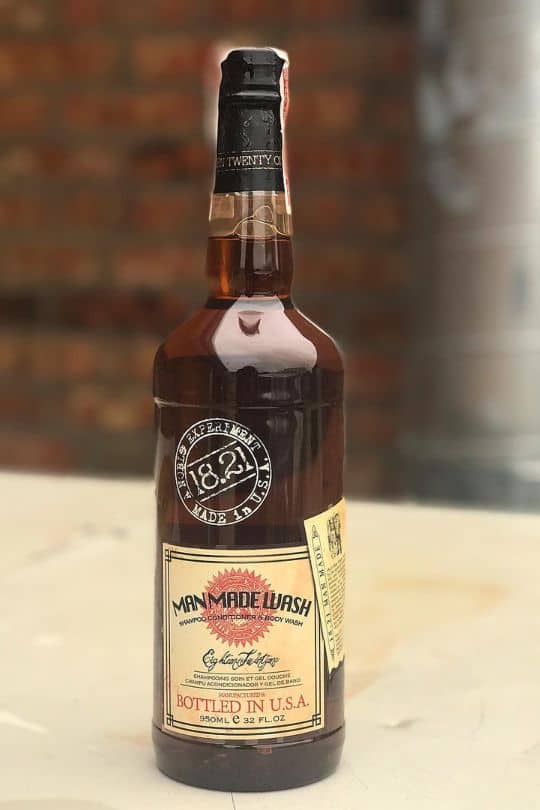
![6 Best Four Season Fifth Wheel RVs for Full-Time Living in [currentyear] 7 Best Four Season Fifth-Wheel Trailers](https://www.rvingknowhow.com/wp-content/uploads/2021/12/Best-Four-Season-Fifth-Wheel-Trailers-150x150.jpg)
